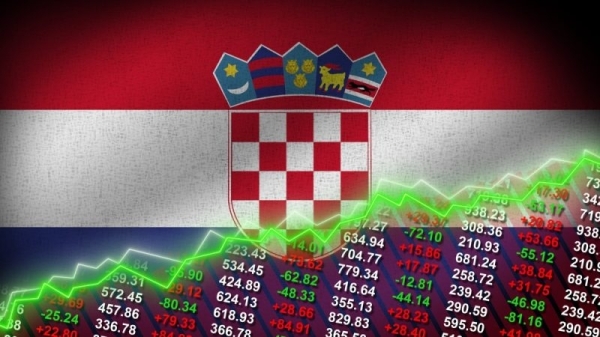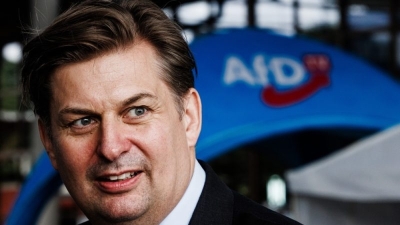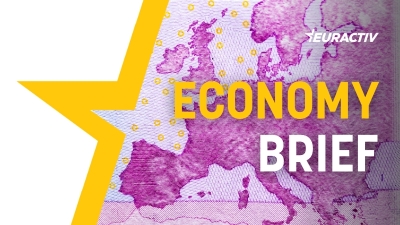Croatian growth exceeded experts’ expectations in 2023

Fuelled by consumer optimism and supported by wage growth, economic activity in Croatia last year grew more than economists previously predicted.
Preliminary data released by the Croatian Bureau of Statistics (DZS) on Tuesday showed that Croatia’s GDP grew by 2.8% last year, with GDP growth in last year’s fourth quarter hitting a 4.3% growth compared to the same quarter of the previous year – data that is better than what independent analysts had predicted for 2023.
RBA’s macroeconomists, for example, expected a 4% GDP growth in the fourth quarter, while their earlier forecasts predicted a yearly 2.6% GDP growth for 2023.
Prime Minister Andrej Plenković also welcomed DZS figures.
“This is the second highest GDP growth last year, after Malta, which is expected to grow by 6.1%. Our 2.8% growth is five times higher than the EU and euro area average. The European Commission expects 0.5% growth at the euro area and the EU level,” Plenković said in a statement to the media, praising his government’s anti-inflation measures.
He also said that Croatia’s economic growth last year exceeded 75% of the EU development average regarding Purchasing power parity (PPP).
In 2013, the first year Croatia was a member of the EU, the country’s development level was only 62% of the EU average, Eurostat data shows. Eurostat data for 2022 show that Croatia’s GDP per capita, expressed in PPP, will be 73% of the EU average in 2022.
According to data from the Croatian Central Bank, after a sharp decline in GDP during the COVID crisis of 8.6% in 2020, Croatia achieved a strong economic rebound in 2021, as reflected in a GDP growth rate of as much as 13.8%.
Economic activity continued to grow strongly in 2022, with a growth rate of 6.3%. According to the HNB, growth continued in 2023, but the growth momentum was still significantly weaker than in the previous two years.
According to DZS data, GDP growth in the last quarter of 2023 is the twelfth consecutive quarter in which Croatian GDP had grown continuously annually.
In the third quarter of last year, annual GDP growth was 3%, with state statistics pointing to 2.2% in the second and 1.6% in the first.
With a growth rate of 4.3% in the last quarter of last year, Croatia ranked first in the EU and the eurozone, according to DZS and Eurostat data. However, it should be stressed that data for all EU countries have not yet been published.
In the last quarter of last year, the GDP growth rate in the EU was 0.3%, while it was just 0.1% among Eurozone members, as shown by Eurostat data.
DZS data show that the main growth driver in the final quarter of last year was private consumption, which grew by 5.3% compared with the same period in 2022.
This is mainly a consequence of continued wage growth in Croatia before and after the introduction of the euro. Thus, according to the latest data from CBS, the average net wage in Croatia in December 2023 was 1,191 euros, which is €143 or 13.6% more than in December 2022, the last month before the introduction of the euro in the country.
However, economists have long warned that the increase in wages in Croatia is not the result of productivity growth but rather the result of a shortage of labour, as the country has been facing a large emigration, especially of young people, since joining the EU.
Another strong contributor to GDP growth in the fourth quarter was investment, which grew by 6% annually. These data largely reflect the withdrawal of money from EU funds, as investment data include not only private companies but also public companies and public institutions.
Government consumption alone increased by 0.2% annually in the fourth quarter, according to DZS data.
However, the data on the decline in exports and imports of goods and services in the final quarter of last year are worrying. Exports of goods and services fell by 4.4% annually in the fourth quarter, while imports fell even more, by 7.1%, according to DZS data.
“It is certainly good that the GDP is growing, but the problem is the growth structure. GDP growth based on public investments and tourism does not enable long-term growth. The same applies to the growth of household consumption, which is based on incentives provided by the government and wage growth, which is not the result of increasing productivity, but of a lack of labour,” warns economic analyst Damir Novotny for Euractiv.
He adds that the Croatian economy is neither export-oriented nor competitive enough. As a result, Croatia could be mired in long-term stagnation once the abundant aid from EU funds dries up, argues Novotny.
“There are no structural reforms in the country, and this threatens long-term stagnation in the future, while other EU members will accelerate the growth of their economies in the coming years,” he adds.
However, stagnation seems unlikely in the short term, with economists predicting economic growth this year and probably in future years.
Raiffeisen analysts, for example, expect Croatia’s GDP to grow by 2.5% this year and say it could be even higher if EU funds are better used and household consumption increases.
(Adriano Milovan | Euractiv.hr)
Read more with Euractiv




